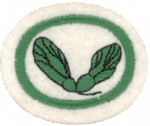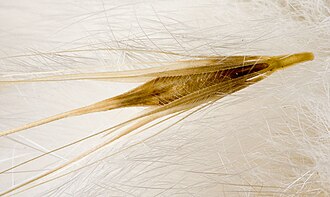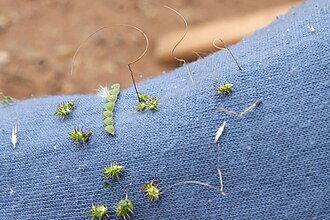Difference between revisions of "AY Honors/Seeds/Answer Key/es"
(Created page with "{{clear}}") |
(Created page with "{{clear}}") |
||
| Line 56: | Line 56: | ||
{{clear}} | {{clear}} | ||
| − | + | {{clear}} | |
| − | |||
* Milkweed | * Milkweed | ||
Revision as of 04:02, 27 February 2021
| Semillas | ||
|---|---|---|
| Asociación General
|
Destreza: 1 Año de introducción: 1961 |
|
Requisitos
|
La especialidad de Semillas es un componente de la Maestría Naturaleza. |
| Conexión Logros para la Investidura: Esta especialidad está relacionada con los requisitos de Logros para la Investidura para AMIGO Estudio de la naturaleza que requiere (como una de dos opciones) hacer una colección de 15 diferentes clases de semillas como está escrito en el requisito #9 de esta especialidad. Esta especialidad es una elección popular para la especialidad de la categoría de Estudio de la naturaleza de nivel de destreza 1 requerido para los AMIGOS DE LA NATURALEZA. |
1
2
3
4
- Milkweed
- Thistles
- Dandelions
Water
Plants that grow in water (aquatic and obligate wetland species) are likely to utilize water to disperse their seeds. For example, all mangroves disperse their offspring by water. In one mechanism, the seedling separates from the fruit, leaving its cotyledons behind, and—floating horizontally on the water surface—is carried away by tidal or river flow. After a month or two, the propagated seed turns vertical in the water. Once it "feels" bottom or strands, roots start to develop and leaves appear at the upper end.
A mechanism commonly seen in coastal plants are those that promote flotation of the fruit, allowing the seed to be carried away on the tide or ocean currents. Examples would be:
- The coconut produces a large, dry, fiber-filled fruit capable of a long survival adrift at sea.
- Alexandrian laurel or kamani produces a globose fruit that is almost cork-like.
Animals
A significant aspect of plant-animal cooperation involves plants designed to take advantage of animal abilities to move. Some fruit have prickly burrs or spikes that attach themselves to a passing animal's fur or feathers so that the animal will carry them away. Some seeds are contained within a soft fruit that "invites" animals to consume it. These seeds have a tough protective outer-coating so that while the fruit is digested, the seeds will pass through their host's digestive tract intact, and grow wherever they fall. Some seeds are appealing to rodents (such as squirrels) who hoard them in hidden caches, often beneath the surface of the soil, in order to avoid starving during the winter and early spring. Those seeds that are left uneaten have the chance to germinate and grow into a new plant.
Some animals that disperse may also eat the seed.
- Beggarlice
- Cockle burr
- Apple
- Banana
- Strawberry
- Oak (acorns)
5
6
7
8
9
References
- Wikipedia articles
- Categoría: Tiene imagen de insignia
- Adventist Youth Honors Answer Book/Honors/es
- Adventist Youth Honors Answer Book/es
- Adventist Youth Honors Answer Book/Skill Level 1/es
- Categoría: Libro de respuestas de especialidades JA/Especialidades introducidas en 1961
- Adventist Youth Honors Answer Book/General Conference/es
- Adventist Youth Honors Answer Book/Nature/es
- Adventist Youth Honors Answer Book/Nature/Primary/es
- Adventist Youth Honors Answer Book/Stage 0/es
- Adventist Youth Honors Answer Book/Naturalist Master Award/Flora/es
- Adventist Youth Honors Answer Book/IAConnection/es
- Adventist Youth Honors Answer Book
- Adventist Youth Honors Answer Book/Do at home




